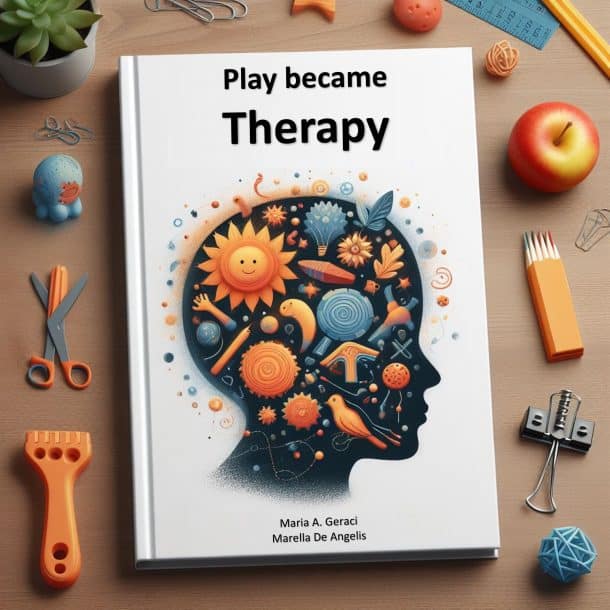HOW NON-DIRECTIVE PLAY THERAPY HELPS CHILDREN
DEFINITION PLAY THERAPY NON-DIRECTIVE
Non-Directive Play Therapy is an effective, nonintrusive therapy that takes place with children and youth. Interest in play therapy as a therapeutic intervention by play professionals has grown steadily over the past decade. The need was to find interventions aimed at children and adolescents with emotional difficulties.
This approach is based on building a one-on-one relationship, where the therapist creates a safe and trusting environment that allows the child to feel free to express and explore his or her feelings and thoughts. These can be communicated directly or indirectly, through behavior and play.
The therapist’s job is to listen, understand and respond to these communications in order to help the child achieve greater awareness of his feelings. This enables him to discover more hidden and chaotic emotional states and gain mastery over them, then manage them.
The nondirective therapeutic approach is based on the principles of nondirective psychotherapy, developed by Carl Rogers and adapted to child therapy by Virginia Axline. Its foundation lies in the belief that there exists in all human beings a drive for self-actualization, a source of motivation in both children and adults. Therefore, having the opportunity to express themselves freely, children through play experiences and the figure of the therapist are able to spontaneously reach solutions and resolve their emotional difficulties.

Rogers’ non-directive psychotherapy
Rogers’ non-directive therapy, also known as client-centered therapy, is based on the idea that the impetus for change comes from the patient, not the therapist, whose role, however, is to provide the favorable conditions for such change.
The three basic conditions
In order for the therapist to foster the patient’s “self-actualization,” three basic conditions are necessary:
1. Authenticity (not adopting a defensive role or position toward the patient, but rather being oneself and spontaneous in the relationship).
2. Unconditional acceptance of the patient (having a caring attitude of interest and affection, deep respect for the patient, valuing him or her for who they are, refraining from judgment).
3. Empathy (feeling and understanding the patient’s world, accepting him as unique and suspending one’s own judgment; empathizing with the patient’s feelings so that he can better understand and accept them).
Through this mirroring process, the patient recognizes and becomes more aware of his or her own emotional states, and thus begins to master them. This process is noninterpretive and focuses on the present, using the content that the patient himself provides.
Axline’s non-directive play therapy
Virginia Axline applied Rogerian constructs to the developmental age, paving the way for non-directive or child-centered play therapy (Child Center Play Therapy), influencing this field substantially.
Axline encourages the child to be himself or herself in the therapeutic context, recognizing the child’s potential and ability to promote change. In particular, the therapist’s acceptance and construction of a safe environment allows the child to unleash his or her potential and to explore and express his or her emotions through play, which is seen as a natural means of self-expression.
Virginia Axline’s eight guidelines
Axline, in developing non-directive play therapy, incorporates Rogers’ principles into eight guidelines that represent essential preconditions for therapeutic practice.
These emphasize the importance of a nonintrusive and trusting relationship between the practitioner and the child, and the acceptance of the idea that the child chooses the direction in which the sessions should go. In addition, the importance of preferring reflection rather than interpretation, of respecting children’s mental defenses, and of imposing therapeutic boundaries on the relationship is emphasized.
- Develop a warm and reassuring relationship with the child.
- Accept the child exactly as he/she is.
- Establish a feeling of permissiveness in the relationship so that the child feels completely free to express his feelings.
- Recognize and mirror the feelings the child is expressing, so that he/she becomes more aware of his/her emotions and behavior.
- Have and demonstrate deep respect for the child’s ability to solve problems, make choices and institute changes when given the chance.
- Do not attempt to direct the child’s actions or conversations in any way.
- Do not rush therapy; it is a gradual process.
- Establish only the limits necessary to anchor therapy in reality and to make the child aware of his responsibilities.
Child-Centered Play therapy (CCPT)
Beginning with Axline’s work, Landreth, Guerney and Ray further defined and developed CCPT, initially referred to as Non-Directive Play Therapy.
According to the person-centered approach, the child is constructed through interaction with others and their experiences. Expectations and acceptance of others are important to his or her development.
Fostering an environment of safety, acceptance and empathic understanding is intended to bring out the child’s natural tendency for growth. The therapist trusts the child’s inner direction toward positive growth, which is expressed within a facilitative relationship.
The therapist recognizes that the best way to understand a child’s behaviors and emotions is to discover the way a child sees his or her world and to accept his or her inner world. Through the therapeutic relationship, the child can explore new ways of being and potentially unlock innate potentials.
The role of the therapist
CCPT is an intertwined process, where each principle overlaps and it is interdependent with the others. While giving the child freedom, the right to choose and the respect of their decisions, the professional is not a passive observer within the therapy. On the contrary, it involves active participation and intense involvement during sessions in the playroom.
Although the choice of problems and the focus of play are determined by the child, the therapist makes sure to build a friendly and confident relationship, while establishing clear and consistent limits of behavior and time.
Despite imposed limits, the atmosphere in the playroom is relaxed and characterized by a sense of trust and security. This allows child to feel free to express and explore their emotional states.
REFERENCES NON DIRECTIVE PLAY THERAPY
- Axline, V. (1947). Play Therapy. New York: Ballantine Books.
- Axline V. (1964). Dibs in Search of Self.
- Axline V. (1969).Play Therapy; the Groundbreaking Book That Has Become a Vital Tool in the Growth and Development of Children.
- Guerney, L. (2001). Child-centered play therapy. International Journal of Play Therapy 10(2):13-31.
- Landreth, G. (2012). Play therapy: The art of the relationship (3rd ed.). New York, NY: Routledge.
- Nordling W. J. & Guerney L. F. (1999). Typical stages in the child-centered play therapy process. Journal for the Professional Counselor, 14 (1), 17-23.
- Ray, D. (2011). Advanced play therapy: Essential conditions, knowledge, and skills for child practice. New York, NY: Routledge.
- Ray, D., & Landreth, G. (2015). Child centered play therapy. In D. Crenshaw & A. Stewart (Eds.), Play therapy: A comprehensive guide to theory and practice (pp. 3-16). New York, NY: Guilford.
- Rogers C. (1951). Client-centered therapy: It’s current practice, implications, and theory. Boston: Houghton Mifflin.
- Wilson K. , Ryan V. (2006). Play therapy: A non-directive approach for children and adolescents.

